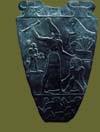Dynasty Notes
The original conventions of the egyptian dynasties started with Dynasty 1 and the unification of Egypt under Menes. This was pretty much when documentary evidence could be found and matched the writings of other egyptian historians.
But, with newer archaeological techniques and the re-excavation of some sites, we've discovered much more information. This has led to some consternation in the field of egyptology -- what to do with these "earlier" kings that we have identified, and do we even know that some of them were kings?
Most of the history is based on interpretation of myths and stories, and some pie-in-the-sky assumptions about early egyptian culture. I'm not an expert, so I can't honestly say how solid these timelines are for early history, but even a cursory reading of the documentation about the early kings leads me to believe that we are stretching pretty far to know anything other than a name and perhaps a burial place.
So, you'll sometimes see references to "Dynasty 0" or even "Dynasty 00" to provide a catch-all for these earlier kings. Some of them are known from a single artifact, or a few inscriptions, so the construction of a line of succession is very hard and in most cases it seems to be completely made up (depending on who you talk to and what particular position they support). It's important to note that even though they are called "dynasty 0 and 00" they are not really dynasties of kings like we are used to seeing later -- it's just a convenient label for those kings that "come before" the standard history.
 During this time, Egypt wasn't a unified country. It certainly wasn't as
large as modern Egypt -- Upper Egypt probably stopped
around Aswan. Rulers of individual areas were regional kings,
some ruling from the north and others from cities in the south,
such as This. About 9—13 kings ruling from Heirakonpolis in
Upper Egypt. Only the last four are known. There is some question
as to whether the 0 Dynasty includes Narmer – he
is usually included in the 1st Dynasty as the founding king of Egypt. He is recorded as
the “first king” of Egypt.
During this time, Egypt wasn't a unified country. It certainly wasn't as
large as modern Egypt -- Upper Egypt probably stopped
around Aswan. Rulers of individual areas were regional kings,
some ruling from the north and others from cities in the south,
such as This. About 9—13 kings ruling from Heirakonpolis in
Upper Egypt. Only the last four are known. There is some question
as to whether the 0 Dynasty includes Narmer – he
is usually included in the 1st Dynasty as the founding king of Egypt. He is recorded as
the “first king” of Egypt.
Some of the “names” here are simply expressions of the symbol used by the king – a crocodile or scorpion in a serekh, symbolizing the “king name” and usually meant as “The Horus X”, i.e., “The King X”. They may not be real names, and the same sigil may be used by more than one person. There are many serekhs found that are similar, and many anonymous serekh's found from this period.
There is a series of mostly unknown kings at the beginning of the dynasty who are known only from a single name inscription. They include Ny-hor, Hat-hor, and Pe-Hor, among others.
Early kings of the "pre-dynastic" era include such near-mythical figures as "Scorpion" and "Crocodile". These are not really names, but are instead references to kings named after the hieroglyphic symbol that often accompanied them. "Scorpion" is called scorpion simply because he is represented by a tiny scorpion glyph. Later kings have "normal" sounding names, but this is only because we have more information about them. Using the logic of earlier kings, it would be possible to call King Narmer simply "catfish" because part of his name is written using the symbol for catfish.
pharaohs